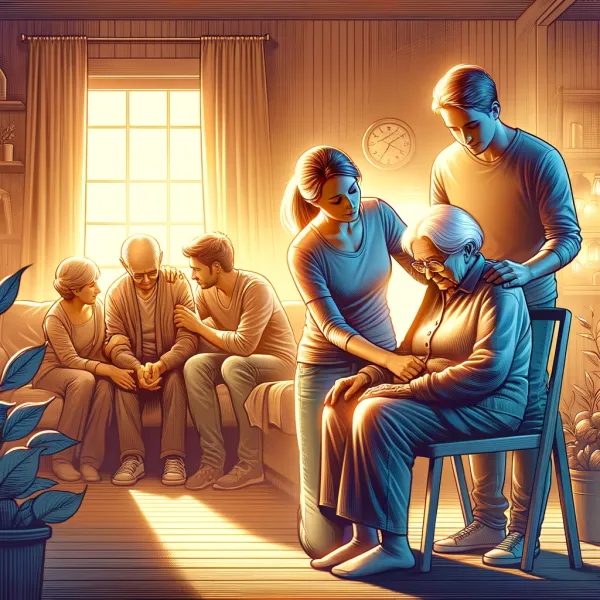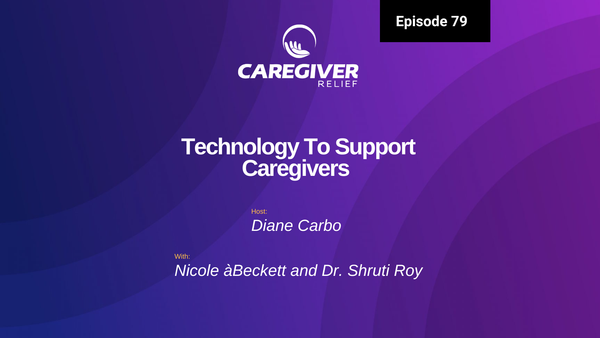Navigating the Complex Journey of Mental Healing Understanding the Grieving Process
Explore mental healing from grief with 'Navigating the Complex Journey of Mental Healing: Understanding and Overcoming Grief.' This guide offers insights into managing loss through active listening, acknowledging pain, and self-care practices, helping find new well-being after loss.

Embracing the Journey of Emotional Healing
Grief is an inherently complex and deeply personal journey that each individual navigates differently. It's a natural response to the profound loss of a loved one, encompassing a wide range of emotions and experiences. Renowned psychiatrist Dr. Katherine Shear describes grief as the transformation of love in the absence of the loved one. This poignant definition captures the essence of grief as not just a state of sadness but also as a testament to the depth of love shared.
The Individual Nature of Grief
Every person's grief experience is unique, making it a deeply personal journey. This individualized process is characterized by an intense longing and yearning for the person who has passed away. The grieving process involves not only coping with the loss but also adjusting to a changed life without the presence of the loved one. Grieving individuals often find themselves revisiting memories, special moments, and the unique relationship they shared with the deceased. This intense longing is a natural part of the healing process, reflecting the deep connection that has been lost.
Grief as a Natural Response
Grief is a normal and natural response to loss. It signifies the emotional pain that comes with the absence of a loved one. This emotional state is not limited to feelings of sadness; it encompasses a range of emotions such as disbelief, anger, guilt, and profound sorrow. The grieving process is a testament to the fact that to love deeply also means to feel deep loss.
The Role of Intense Longing in Grief
Intense longing is a central aspect of grief. It manifests as an emotional ache, a desire to reconnect with the loved one who has passed. This longing can be felt in various ways – through dreams, reminiscing about past experiences, or imagining conversations with the loved one. It's a natural response that reflects the enduring bond and the impact the person had on the griever's life.
Navigating the Grieving Process
Navigating through grief involves acknowledging and expressing these intense feelings. It's about finding healthy ways to honor the memory of the loved one and gradually adapting to life without their physical presence. For many, this includes participating in grief counseling, sharing memories with other family members, using special memories, or engaging in activities that the loved one enjoyed. The process of grieving is not linear and does not follow a set timeline; it evolves and changes over time.
Understanding the grieving process is crucial for mental healing. It involves recognizing grief as a natural, albeit painful, part of life. The intense longing felt during grief is a reflection of the love and connection that was shared with the lost loved one. By embracing this process and allowing oneself to experience these emotions, individuals can begin to find a path towards healing and eventually discover ways to carry the memory of their loved one forward in their lives.

Health Implications of Grief: Understanding the Physical Impact of Loss
Grief is often perceived primarily as an emotional and mental health challenge, but its impact on physical health is equally significant and far-reaching. The journey through grief is not just one of emotional turmoil but also one that can profoundly affect the body. This intricate connection between our emotional state and physical well-being becomes especially evident in times of intense mourning and loss.
Increased Risk of Cardiovascular Events
Research has shown that the bereaved face a heightened risk of cardiovascular events, such as strokes and heart attacks. This increased risk is particularly notable shortly after the loss of a loved one, indicating the immense stress the body undergoes during the grieving process. The bereavement period involves not just emotional distress but also significant physiological changes, which can strain the heart and vascular system, leading to these serious health implications.
The Body’s Response to Grief: Fight or Flight
Dr. Lisa M. Shulman, a prominent neurologist, highlights the profound ways in which grief can trigger the body's "fight or flight" response. This primal reaction is the body's way of responding to a perceived threat, and in the case of grief, the loss of a loved one is interpreted as a significant emotional and existential threat. This response includes a surge in stress hormones, increased heart rate, elevated blood pressure, and heightened respiratory rate, all of which put additional strain on the body.
Disrupted Sleep and Immune System Changes
Grief often leads to disrupted sleep patterns, which can have a cascade of negative effects on physical health. Poor sleep can weaken the immune system, making the grieving individual more susceptible to illnesses. Moreover, the stress associated with grief can lead to changes in the immune system function, potentially impacting the body's ability to defend against diseases and infections.
Risk of Blood Clots and Other Physical Symptoms
The physical stress of grief can increase the risk of developing blood clots, a condition known as thrombosis. This risk is compounded by the potential for decreased physical activity and changes in diet during the grieving period. Additionally, grief can manifest in various physical symptoms like loss of appetite, general aches and pains, and a feeling of physical exhaustion, all of which are responses to the emotional and psychological stress of loss.
Importance of Addressing Physical Health During Grieving Process
Given these significant health implications, it is crucial for individuals experiencing grief to take care of their physical health. This can include engaging in regular physical activity, maintaining a balanced diet, seeking regular medical check-ups, and paying attention to any new or worsening health symptoms. It is also important for healthcare providers to be aware of the physical effects of grief, as they can play a critical role in helping the bereaved manage these challenges.
The health implications of grief extend far beyond the emotional and mental realms. The physical effects are profound and can lead to serious health conditions if not addressed. Understanding and acknowledging these physical impacts are crucial steps in the healing process, allowing individuals to take comprehensive care of themselves while navigating the complexities of grief.
The Healing Power of Mindful Activities: Harnessing Creativity and Mindfulness in Grief Recovery
Engaging in mindful activities plays a crucial role in the journey of healing from grief. Activities such as journaling, meditation, and various forms of creative arts are not just pastimes; they serve as powerful tools in rewiring the brain's normal response to the intense emotions and stress caused by grief. These practices foster the development of positive neural connections, facilitating a crucial aspect of the mental healing process.

Journaling: A Path to Self-Discovery and Emotional Release
Journaling stands out as a particularly therapeutic activity in the context of grief. It provides a safe, private space for individuals to express their thoughts, feelings, and memories related to their loss. This act of putting pen to paper can be immensely cathartic, allowing for the release of pent-up emotions such as sadness, anger, guilt, or confusion. Furthermore, journaling can help in tracking the evolution of one's emotional state over time, offering insights into the healing process and highlighting moments of growth and change.
Meditation: Cultivating Mindfulness and Inner Peace
Meditation is another powerful tool in managing the complexities of grief. By promoting mindfulness, meditation helps individuals to stay present and grounded, reducing the overwhelming nature of grief-related thoughts and emotions. Regular meditation practice can lead to a greater sense of calm and emotional stability, reducing symptoms of anxiety and depression often associated with grief. Additionally, meditation can improve concentration and sleep quality, both of which are commonly disrupted during the grieving process.
Creative Arts: Expressing Emotions Beyond Words
The creative arts, encompassing activities like painting, music, and crafting, provide a unique avenue for expressing grief. For many, the creative process offers a way to articulate feelings that might be difficult to express in words. Engaging in artistic activities can be a form of emotional release, offering a sense of accomplishment and joy amidst the pain of loss. Moreover, creative expression can serve as a tribute to the loved one, celebrating their life and the impact they had.
The Role of Mindful Activities in Neural Rewiring
Engaging in these mindful activities has a profound impact on the brain. These practices promote the formation of new, positive neural pathways, an aspect critical in the context of grief where negative thoughts and emotions can be pervasive. By focusing on activities that bring a sense of peace, joy, and accomplishment, individuals can gradually shift their brain's response to grief, moving towards a more balanced and healthy emotional state.
Incorporating Mindful Activities into Daily Life
To harness the healing power of these activities, it's important to incorporate them into one's daily routine. This could involve setting aside time each day for journaling, practicing meditation, or engaging in a creative hobby. The key is consistency and the willingness to explore different activities to find what resonates most deeply.
The healing power of mindful activities like journaling, meditation, and creative arts is an invaluable component of the grief recovery process. These activities not only provide a healthy outlet for expressing and processing emotions but also play a significant role in rewiring the brain's response to grief. By fostering positive neural connections, they aid in the journey towards mental well-being and resilience in the face of loss.
The Dynamic Nature of Grief: Navigating Through an Ever-Changing Emotional Landscape
Grief is an inherently dynamic process, characterized by its fluctuating and evolving nature. It is not a static emotional state but rather a journey that varies over time, encompassing a spectrum of feelings and experiences. This evolving nature of grief is fundamental to understanding and coping with the loss of a loved one.

Fluctuating Emotional States in Grief
Grief does not follow a linear path; instead, it is marked by a series of ebbs and flows. Individuals may find themselves oscillating between intense periods of sorrow and moments of relative calm or even happiness. This fluctuation can occur over days, weeks, or even within a single day. One moment, a grieving person might feel overwhelmed by the intense longing for their lost loved one; the next, they might find a sense of peace or solace in a cherished memory or activity.
Confronting the Loss and Seeking Respite
The grieving process often involves a balance between confronting the reality of the loss and seeking moments of respite from the intense emotions associated with grief. Confrontation might involve acknowledging the permanence of the loss, experiencing the full extent of the emotional pain, or expressing feelings through crying, talking, or other means. On the other hand, respite can be found in daily routines, hobbies, social interactions, or even brief periods of distraction, providing a necessary break from the intensity of grief.
Integration of Grief into Daily Life
Over time, grief begins to integrate into the individual's daily life in a more manageable form. This does not mean that the loss is forgotten or that the grieving person no longer feels sadness. Rather, it signifies an adjustment to a new normal where the loss becomes a part of one's life story. This integration often involves finding ways to honor and remember the loved one, while also engaging in life's activities and responsibilities.
The Unique Journey for Each Individual
It's important to recognize that the dynamic nature of grief means that each person's journey is unique. There is no "right" or "wrong" way to grieve, and the timeline for this process varies greatly from person to person. Some may find that their grief becomes more manageable in a matter of months, while for others, it may take years.
Navigating the Dynamic Path of Grief
Navigating through the dynamic nature of grief requires patience, self-compassion, and often, support from others. It may involve seeking help from grief counselors, joining support groups, or leaning on friends and family members. Recognizing and accepting the changing nature of grief can help individuals give themselves permission to really experience grief and all the emotions that come with it, without judgment.
The dynamic nature of grief is a fundamental aspect of the experience of loss. It involves a complex interplay of confronting the loss and finding moments of respite, ultimately leading to an integration of the grief experience into one's life. Understanding this ever-changing emotional landscape can aid individuals in navigating their path through grief, finding ways to honor their lost loved ones while continuing to live and grow.

Distinguishing Between Grief and Grieving: Understanding the Emotional Journey After Loss
In the wake of losing a loved one, understanding the distinction between grief and grieving is essential for navigating the complex emotional landscape that follows. Grief and grieving, while closely related, represent different aspects of the emotional response to loss.
Grief: The Immediate Emotional Response
Grief is the immediate, intense emotional reaction that follows the news of a loved one's death. This reaction is often characterized by a flood of strong emotions that can feel overwhelming. Grief manifests in various forms, including deep sadness, disbelief, shock, or even numbness. It's a natural and instinctive response to loss, reflecting the emotional attachment and love one had for the deceased. Grief can be all-consuming, making it difficult to focus on daily tasks or think about anything other than the loss.
Grieving: The Prolonged Process of Adaptation
Grieving, on the other hand, is the prolonged process of adapting to life without the presence of the loved one who has passed away. It's a journey that extends far beyond the initial impact of loss, involving a gradual coming to terms with the new reality. This process is often non-linear and encompasses a wide range of emotions and experiences. Grieving includes dealing with sadness, anxiety, confusion, guilt, and even anger. It also involves navigating the changes in daily life and relationships that occur as a result of the loss.
The Spectrum of Emotions in Grieving
The grieving process is marked by a spectrum of emotions that fluctuate over time. These emotions are not limited to just sadness or longing but can include moments of relief, peace, or even joy as the griever remembers positive memories of their loved one. Grieving is a deeply personal and individual experience, with each person's journey being unique to them. There is no set timeline or 'correct' way to grieve, and the process can vary significantly from person to person.
Adapting to a New Normal
A key aspect of grieving is the slow process of adapting to a 'new normal'. This involves learning to live with the absence of the loved one, which may include developing new routines, finding new meanings or purposes, and forging new relationships. Grieving is not about forgetting the death of a loved one or completely moving on from the loss; rather, it's about finding ways to integrate the loss into one's ongoing life.
The Role of Support in Grieving
Support from family, friends, grief counselors, or support groups can be crucial in the grieving process. Sharing feelings and experiences with others who understand can provide comfort and help in navigating the challenging journey of grief.
Distinguishing between grief and grieving is crucial in understanding the emotional response to loss. While grief is the immediate, intense emotional reaction to the news of a loved one's death, grieving is the longer, more complex process of adapting to life without them. This adaptation involves navigating a range of emotions and changes, and it is a deeply personal journey that unfolds over time. Recognizing this distinction helps in acknowledging and validating the wide array of emotions and experiences that come with losing someone close.

Recognizing Prolonged Grief Disorder: Navigating Extended Emotional Turmoil
Prolonged Grief Disorder (PGD), also known as complicated grief, is a condition that emerges when the normal process of grieving becomes a more severe, extended, and disruptive experience. This disorder represents a significant departure from typical grieving patterns and can have a profound impact on an individual's ability to function in daily life.
Characteristics of Prolonged Grief Disorder
PGD is characterized by a persistent and pervasive grief that does not alleviate over time as expected in the typical grieving process. Individuals with PGD may experience an intense longing or yearning for the deceased, often accompanied by a preoccupation with thoughts or memories of the loved one. This condition is marked by emotional pain that doesn't lessen with time and can continue to feel as acute and intense as it did in the immediate aftermath of the loss.
Impact on Daily Functioning
A key indicator of PGD is the significant impairment it causes in daily functioning. Those suffering from this disorder may struggle with engaging in social activities, maintaining relationships, or performing at work or school. They may also exhibit signs of emotional numbness, detachment from others, and a loss of interest in previously enjoyed activities. These symptoms reflect the profound impact of the loss on their overall well-being and their struggle to adapt to life without their loved one.
The Need for Professional Intervention
Recognizing PGD is crucial because it typically requires professional intervention. Unlike normal grief, which often benefits from informal support systems like family and friends, PGD usually necessitates guidance from mental health professionals. Therapists or counselors trained in grief counseling can provide specialized support and strategies to help individuals navigate their intense emotions and gradually return to a path of healthy grieving.
Treatment Approaches for Prolonged Grief Disorder
Treatment for PGD may include grief therapy, cognitive-behavioral therapy, and in some cases, medication to address severe depression or anxiety symptoms. These interventions aim to help the individual process their loss, confront and reduce the overwhelming emotions associated with their grief, and begin to rebuild a life that incorporates their loss in a more manageable way.
Differentiating PGD from Normal Grief
It's important to differentiate PGD from the normal grieving process. While grief can be intense and last a long time, PGD is distinguished by its debilitating nature and the inability of the individual to find any relief or adaptation over time. Understanding this distinction helps in identifying when someone may need extra support to cope with their loss.
In summary, Prolonged Grief Disorder is a serious condition that occurs when grief becomes an enduring, distressing experience, impeding an individual's ability to function in their daily life. Recognizing this disorder is crucial as it warrants professional help to guide the individual through their intense and prolonged grief, helping them find a path towards healing and adaptation.
Supporting Someone in Grief: A Guide to Compassionate Care
Grief is a profoundly personal and often isolating experience. When someone close to us is grieving, it can be challenging to know how to offer support. Understanding how to be there for a grieving person is crucial, not just for their healing but also for maintaining a meaningful relationship during one of life's most challenging times. This article explores the nuances of supporting someone in grief, emphasizing the importance of active listening, presence, and empathy.
Understanding Grief
Before delving into how to support someone in grief, it's essential to understand what grief is. Grief is the emotional response to loss, particularly to the loss of someone or something to which a bond was formed. It can encompass a range of feelings from deep sadness to anger, and the process of grieving can vary significantly from person to person. There is no 'right' way to grieve, and the process is often non-linear, encompassing stages of denial, anger, bargaining, depression, and acceptance.

Active Listening
One of the most crucial aspects of supporting a grieving person is active listening. This means giving them your full attention, listening without judgment, and resisting the urge to offer unsolicited advice or anecdotes. It's about creating a safe space where the grieving person feels heard and validated. When someone is grieving, they often need to express their feelings and thoughts without fear of judgment or unsolicited advice. Active listening involves being present, both physically and emotionally, and showing empathy and understanding.
Offering Presence
Your presence can be a powerful source of comfort to someone who is grieving. Sometimes, the best support you can offer is simply being there, even if it means sitting in silence. Being physically present can be reassuring and can provide a sense of stability in a world that has been turned upside down by loss. Remember, your presence is more about offering comfort and less about finding the right words to say.
Acknowledging Their Pain
Acknowledging the pain of the bereaved is an essential part of offering support. This means recognizing their loss and their feelings about it. It's important to avoid minimizing their emotions or the situation. Phrases like “They're in a better place now” or “At least they lived a long life” can come across as dismissive. Instead, acknowledge the reality of their pain and loss, which can help validate their feelings and help them feel understood.
Offering Companionship and Hope
While it's important not to rush the grieving process, offering a sense of companionship and future hope can be beneficial. This doesn’t mean trying to fix their grief or hurry them through their process, but rather letting them know you are there for them now and in the future. Companionship can involve regular check-ins, offering to help with daily tasks, or simply spending time with them. Offering hope might involve reminding them gently of the future and the potential for healing and happiness, without dismissing their current pain.
Avoiding Common Pitfalls
When supporting someone in grief, there are certain pitfalls to avoid. These include giving cliched advice, forcing them to talk or move on before they are ready, or avoiding the topic of their loss entirely. It's also important not to take their emotions personally; grief can sometimes manifest as anger or withdrawal, and understanding this can help in not misinterpreting these emotions as directed towards you.
Encouraging Professional Help When Needed
Sometimes, the best way to support someone is to encourage them to seek professional help. This is particularly important if you notice signs of prolonged grief disorder or depression, such as persistent feelings of hopelessness, intense guilt, or thoughts of self-harm. Grief counseling can provide a space for the bereaved to work through their emotions in a structured, supportive environment.
Self-Care for Supporters
Supporting someone through grief can be emotionally taxing. Therefore, it’s important for supporters to practice self-care. This can include setting boundaries, seeking support for yourself, or finding ways to relax and recharge. Remember, taking care of yourself is not selfish; it's necessary to be able to offer ongoing support to the grieving person.
Supporting someone in grief requires patience, empathy, and understanding. It’s about being present, actively listening, and acknowledging their pain without trying to fix it. Each person's grief journey is unique, and being a consistent source of support through this journey is one of the most compassionate acts one can offer. Remember, the goal isn't to take away the pain of loss but to be a comforting presence as the person navigates through their grief.

Grief and the Pandemic: Navigating the Uncharted Waters of Loss During COVID-19
The COVID-19 pandemic has reshaped many aspects of our lives, but perhaps one of its most poignant and painful impacts has been on the experience of grief and loss. The pandemic has introduced unique challenges in how we mourn, complicating the grieving process for many and creating a context of loss unlike any other in recent history.
The Impact of Physical Separation
One of the most heart-wrenching realities of the pandemic has been the inability for many to be physically present with their loved ones during their final moments. Restrictions in hospitals and care facilities, designed to curb the spread of the virus, have meant that many individuals had to endure the pain of losing someone without the closure that comes from a final goodbye. This physical separation has left a profound impact on the grieving process, often intensifying feelings of guilt, regret, and unresolved grief.
The Disruption of Traditional Mourning Practices
Traditional mourning practices, such as funerals, memorial services, and community gatherings, have been significantly disrupted due to social distancing measures. These rituals serve a critical function in the grieving process, offering comfort, community support, and a way to honor the deceased. The pandemic's restrictions have forced many to forego these practices or adapt them in ways that may feel less fulfilling or meaningful, adding another layer of complexity to the grieving process.
Acknowledging the Unusual Nature of Pandemic Grief
The grief experienced during the pandemic is unusual not only in its circumstances but also in its scope. The sheer scale of loss, coupled with the ongoing stress and anxiety related to the pandemic, has created a collective sense of mourning. This communal aspect of grief can be both a source of solidarity and an additional weight, as the constant reminders of loss and suffering can be overwhelming.
The Importance of Acknowledging Sacrifices
For many, the pandemic has involved significant sacrifices, especially for those who could not be with their loved ones in their final moments or who had to grieve in isolation. Acknowledging these sacrifices is crucial in the healing process. Recognizing the constraints and the tough decisions made during this time can help in alleviating feelings of guilt or regret that may accompany grief.
Finding New Ways to Connect and Mourn
In the face of these challenges, many have found innovative ways to connect and mourn. Virtual memorial services, online support groups, and social media tributes have become new avenues for expressing grief and offering support. While these methods may not replace the physical presence and comfort of traditional practices, they provide alternative ways to connect and process grief.
Professional Support for Pandemic-Related Grief
The unique nature of pandemic-related grief may necessitate seeking professional help more than usual. Mental health professionals, grief counselors, and support groups can offer tailored support to address the complexities of grieving during this unprecedented time. This professional help can be crucial in navigating the compounded layers of pandemic grief.
The COVID-19 pandemic has undeniably altered the landscape of grief, presenting challenges that are unique both in their nature and magnitude. Acknowledging the impact of physical separation, the disruption of mourning practices, and the communal aspect of pandemic grief is essential for healing. As we navigate these uncharted waters, finding new ways to connect, mourn, and seek support is vital in addressing the multifaceted nature of grief during these trying times. The pandemic has reminded us of the importance of empathy, support, and resilience in the face of loss.
Strategies for Coping with Grief: A Holistic Approach to Healing Process
Grieving the loss of a loved one can be one of the most challenging experiences in life. However, adopting certain strategies can significantly aid in managing the stress and physical effects of grief. A comprehensive approach that includes self-care, professional help, and lifestyle changes can provide the necessary support during this difficult time.

Adopting Mind-Body Practices
Yoga and Meditation:
Yoga and meditation are powerful practices that can help in managing the emotional and physical stress associated with grief. Yoga combines physical postures, breath control, and meditation to promote relaxation and mindfulness. It is a good thing to practice, as many tat experience grief have difficulty concentrating. It can be particularly effective in alleviating symptoms of anxiety and depression that often accompany grief. This is a normal response to a loved one's death. Meditation, with its focus on mindfulness and breathing, can help center and calm the mind, providing a sense of peace amidst the turmoil of loss.
Maintaining a Balanced Diet:
Nutrition plays a critical role in how our bodies and minds cope with stress and trauma. Grief can often lead to changes in appetite and eating patterns. Focusing on a balanced diet rich in fruits, vegetables, whole grains, lean protein, and healthy fats can provide the necessary nutrients to support physical and mental health during this time.
Practicing Good Sleep Hygiene
Regular Sleep Patterns:
Grief can significantly disrupt sleep patterns, leading to insomnia or excessive sleeping. Practicing good sleep hygiene is essential for emotional and physical well-being. This includes establishing a regular sleep schedule, creating a comfortable sleep environment, and avoiding stimulants like caffeine and electronics before bedtime.
Regular Exercise:
Physical activity is a potent stress reliever and mood booster. Exercise releases endorphins, chemicals in the brain that act as natural painkillers and mood elevators. Regular physical activity, whether it's walking, jogging, swimming, or cycling, can help alleviate some of the physical and emotional pain that comes with grief.
Engaging in Social Activities and New Responsibilities
Social Support:
5. Engaging in social activities can provide a sense of normalcy and connection. While it’s important to give yourself space to grieve, isolating oneself can exacerbate feelings of sadness and loss. Maintaining connections with friends and family, participating in community activities, or joining a support group can provide emotional relief and a sense of belonging.
Embracing New Responsibilities:
Taking on new responsibilities or hobbies can also be therapeutic. It can serve as a distraction, provide a sense of purpose, and can be a step towards establishing a new routine. This could be anything from volunteering, joining a club, learning a new skill, or even adopting a pet.
Professional Help and Therapy
In addition to these self-care strategies, it may be beneficial to seek professional help. A therapist or grief counselor can provide a safe space to express feelings, offer guidance, and help develop coping strategies tailored to individual needs. For some, medication may be necessary to manage symptoms of severe depression or anxiety that can accompany grief.
Conclusion
Navigating the complexities of grief and loss is a multifaceted process. It requires understanding and patience, both towards oneself and from others. By adopting a holistic approach that includes mind-body practices, maintaining health and well-being through diet and exercise, engaging in social activities, and seeking professional help when necessary, individuals can find their way through the grieving process. This approach allows for processing grief in healthy ways, eventually leading to a new sense of normalcy and well-being. Remember, grieving is a personal journey, and what works for one person may not work for another. The key is to find what helps you in your journey towards healing.
You might also like this article:







